11 Classical Piano Pieces You Might Want To Learn and Easier Arrangements
To help you find the sheet music that works best for your skill level, we’ve provided three different arrangements for each title!

Most pianists have a bucket list of pieces they would love to play someday. But, it can be frustrating to find the sheet music only to discover it is way beyond your level.
Since it can take years to develop technique to play difficult pieces well, it’s okay to play simpler arrangements or excerpts of those pieces first until you are ready to tackle the real deal. Or, a simpler version might be all that you are looking for.
We’ve found some of the most common classical piano solos and simpler arrangements of each one.
For each piece, read about what challenges you might come across in the original version and what makes the simpler versions more accessible. We’ve included the original version, an easier version, as well as an “easiest” version for beginners.
1. “Für Elise” by Beethoven
The opening and most recognizable theme of “Für Elise” is not terribly difficult. It does have a lot of octave stretches, so if reading a huge range of notes is challenging or if your hand doesn’t reach octaves easily, you might find this part challenging. However, this is definitely a piece that progresses in difficulty after that familiar opening theme. The following sections are definitely more technically advanced and require excellent control and facility over the keys.
EasierThis arrangement by Lisa Donovan Lukas simplifies the left hand in the opening theme and omits several of the more complicated passages later in the piece.
EasiestThis arrangement focuses on the most familiar right hand melodic line and just has a few left hand notes to carry the bass line.
2. “Moonlight Sonata” by Beethoven
While the first few measures seem manageable, this piece gets tricky quickly. It is written in the key of c-sharp minor. Reading four sharps can be difficult for less-experienced pianists. The left hand consistently moves in octaves while the right hand is busy juggling several voices between the melodic line and the familiar arpeggiated line.
EasierThis abridged version maintains the triplet rhythms of the original, but moves to the key of d minor, with only 1 flat. It also simplifies the left hand to single notes instead of octaves and the right hand part is thinned out as well.
EasiestThis arrangement by Jennifer Eklund is much easier to read than the original. The rhythms are printed as quarter notes, rather than eighth note triplets. It is also in a much simpler key, e minor.
3. “Clair de Lune” by Debussy
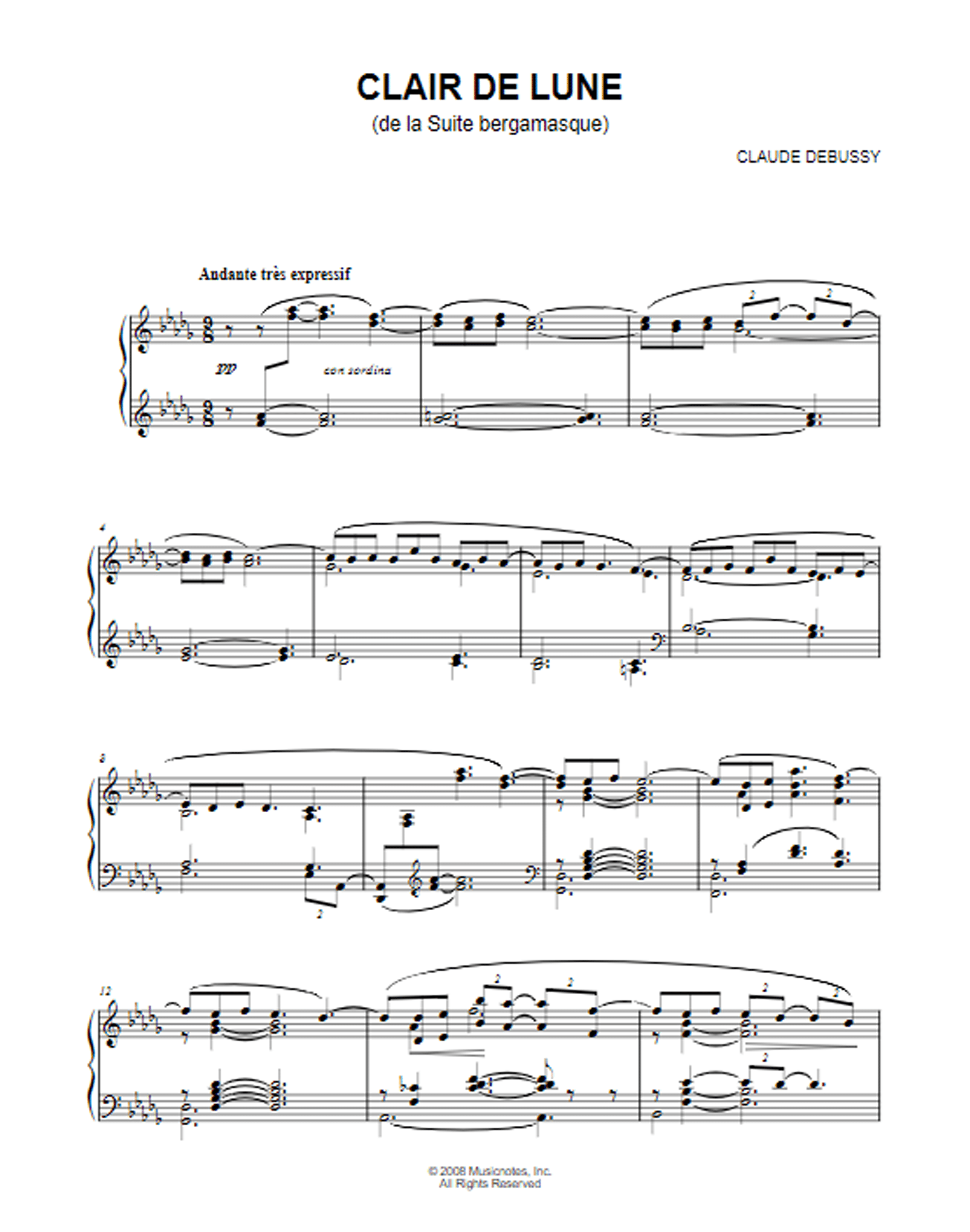

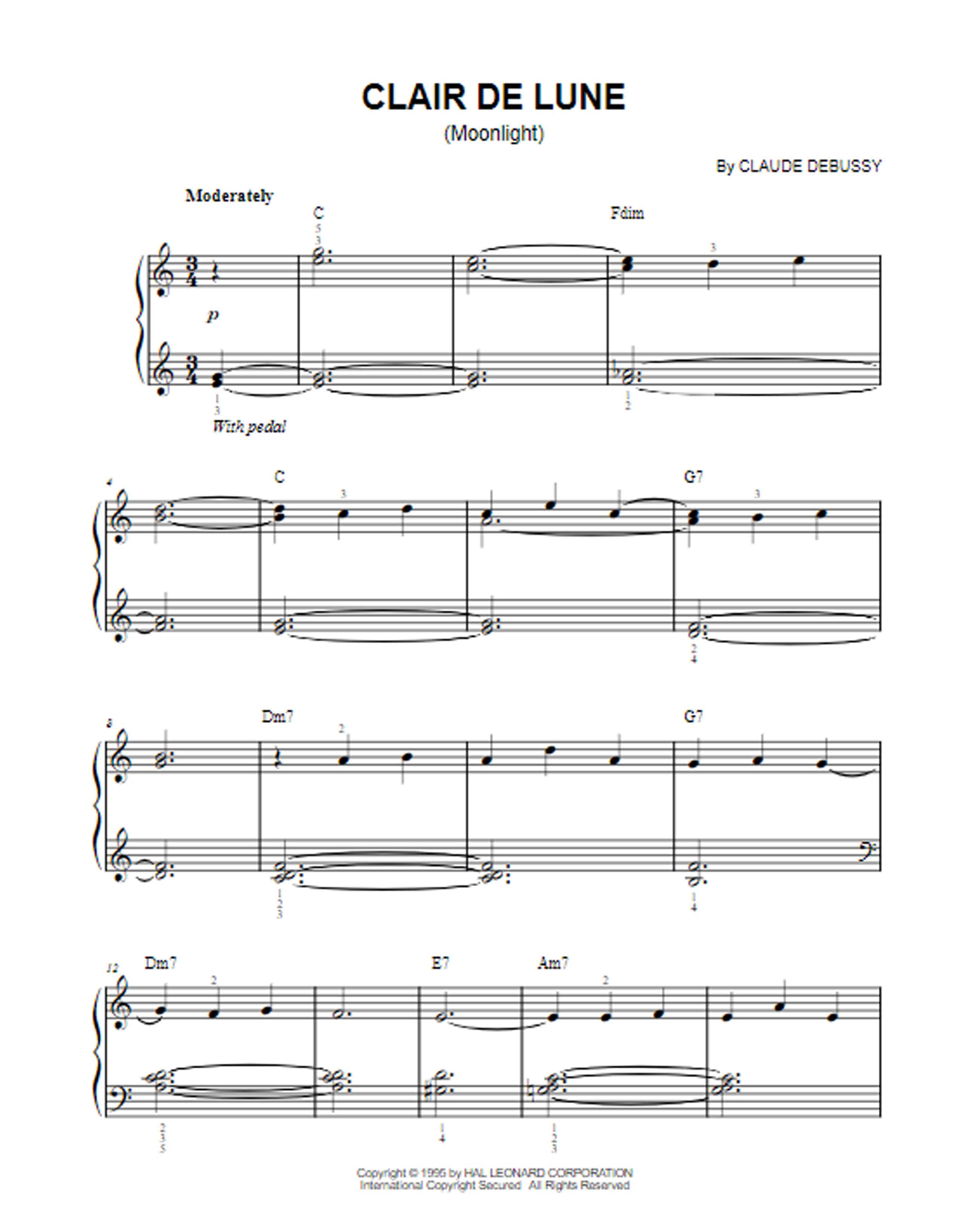
This well-loved piece is definitely a big undertaking. Between a challenging key signature, challenging rhythms, and complex chords, a lot of skill and piano experience is required to play this piece.
EasierThis version is much easier to read notation-wise, in the key of C. However, the rhythm is written very similarly to the original. The harmonies are also simplified to fit under the hands easier.
EasiestThis simplified arrangement is also in the key of C, but is much easier to read rhythmically. It uses a smaller range of notes that most beginning pianists are familiar with.
4. “Maple Leaf Rag” by Joplin
The stride left hand pattern is one characteristic of ragtime piano that is particularly challenging. Stride bass lines have large leaps, often from low octave to mid-range chords. Stride takes a lot of practice to move the left hand accurately and in time.
EasierThis arrangement by Jennifer Eklund eliminates the stride left hand and keeps the bass line in a much smaller range. The right hand focuses on the melody only and does not include any chords or harmony notes. This arrangement is easy to read, in the key of C.
EasiestThis arrangement by Alicja Urbanowicz is in a much easier key, F Major, and uses easy-to-read rhythms that are only quarter, half and whole notes. It is just an excerpt of the most familiar opening theme.
5. “Hungarian Rhapsody” by Liszt
At 20 pages long, this monstrous piece is full of technically demanding music. This piece moves through a range of musical moods and each one presents new challenges: glissando-like runs, unusual rhythms, hand-crossings, challenging fingers, octave runs and more. This is definitely a great bucket list piece, but a big project for a pianist of any level.
EasierThis arrangement hits a lot of the key moments of the original but uses a much smaller range of notes. The right is limited to mostly melodic material while the left hand plays a much more basic accompaniment line than the original.
EasiestThis duet by Jennifer Eklund allows you to share the work with a friend. It’s just 2 pages and each part is not too difficult to read and play.
6. “Rondo Alla Turca” by Mozart
This famous movement from Mozart’s “Sonata in A” is always a popular choice. It requires really clean right hand technique between running octaves and zippy 16th note passages. The left hand has a lot of important articulation nuances.
EasierMost of the right hand in this arrangement by Betacustic reads similarly to the original. But, the left hand is simplified down to a thinner quarter and half note bass line, rather than chords.
EasiestThis arrangement by Chrissy Ricker includes the first movement of the “Sonata in A”, as well as the “Rondo Alla Turca.” The “Rondo Alla Turca” is simplified to eighth note rhythms and in the key of C.
7. “Chopin Nocturne in E-flat”

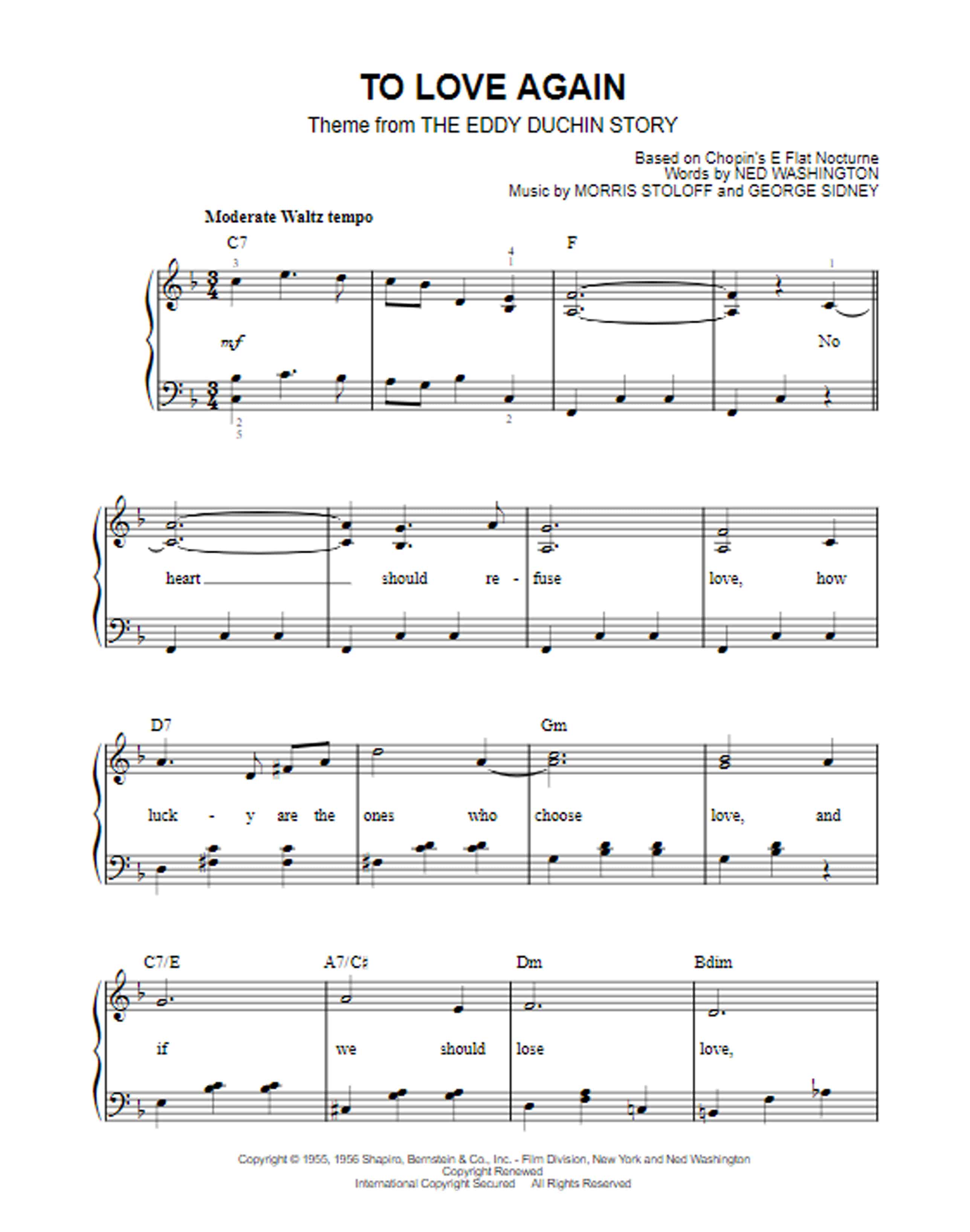
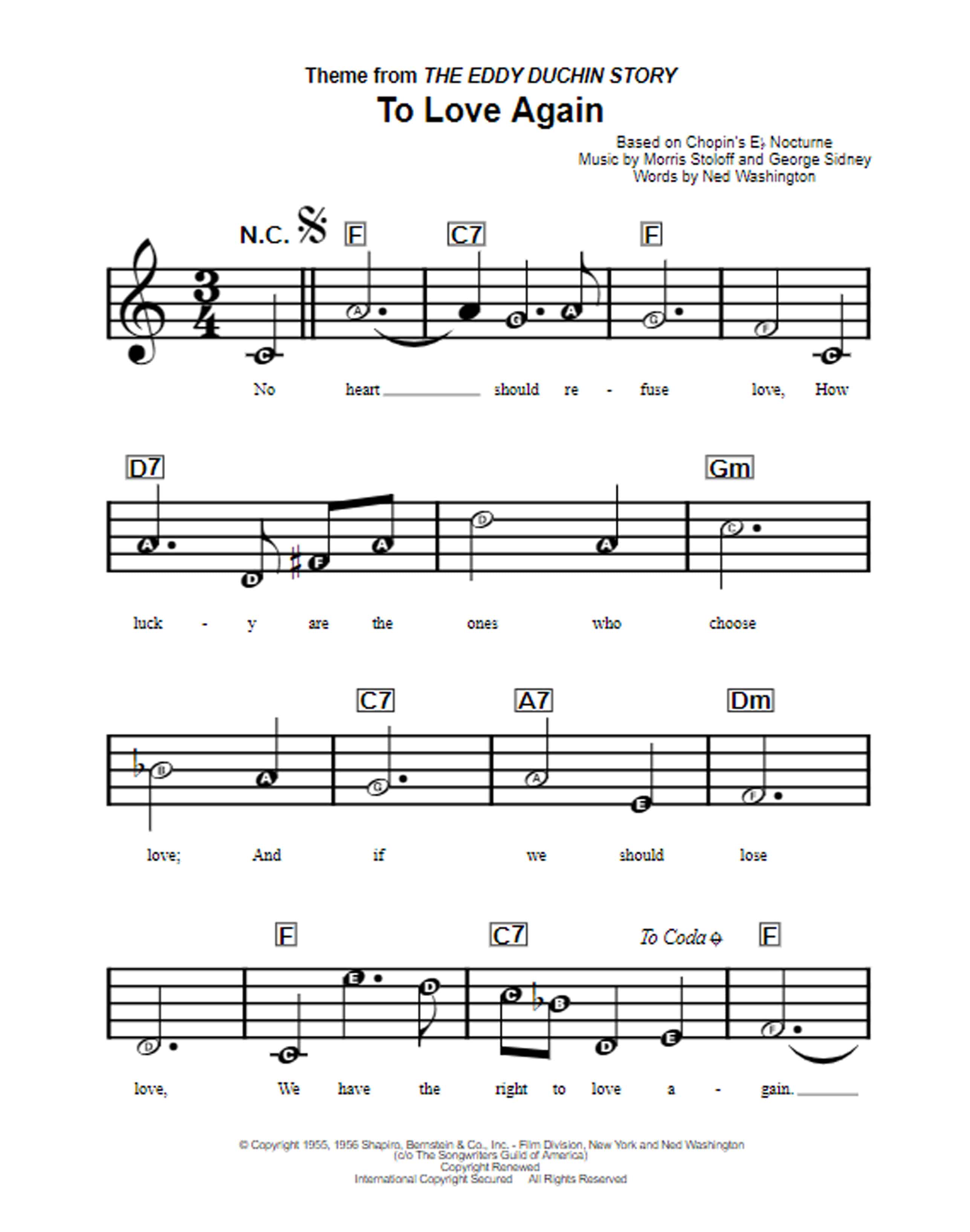
This beautiful piece is full of details. The left hand follows a waltz-like pattern that is fairly chromatic. As with most Chopin pieces, the right hand plays many ornamented notes, runs and trills. There are some complex polyrhythms throughout the piece.
Easier“To Love Again” by Morris Stoloff and George Sidney is based on the melody from Chopin’s “Nocturne in E-flat.” The left hand plays a very simplified waltz pattern while the right hand plays the melody with a handful of harmony notes.
EasiestHere’s an even simpler version of “To Love Again.” This one is a Beginner Notes arrangement, which means it reads like a lead sheet. The right hand melody is notated with a larger font and includes note names on each note. The left hand has the option to play chords which are written as chord symbols about the staff.
8. “Fantasie-Impromptu” by Chopin

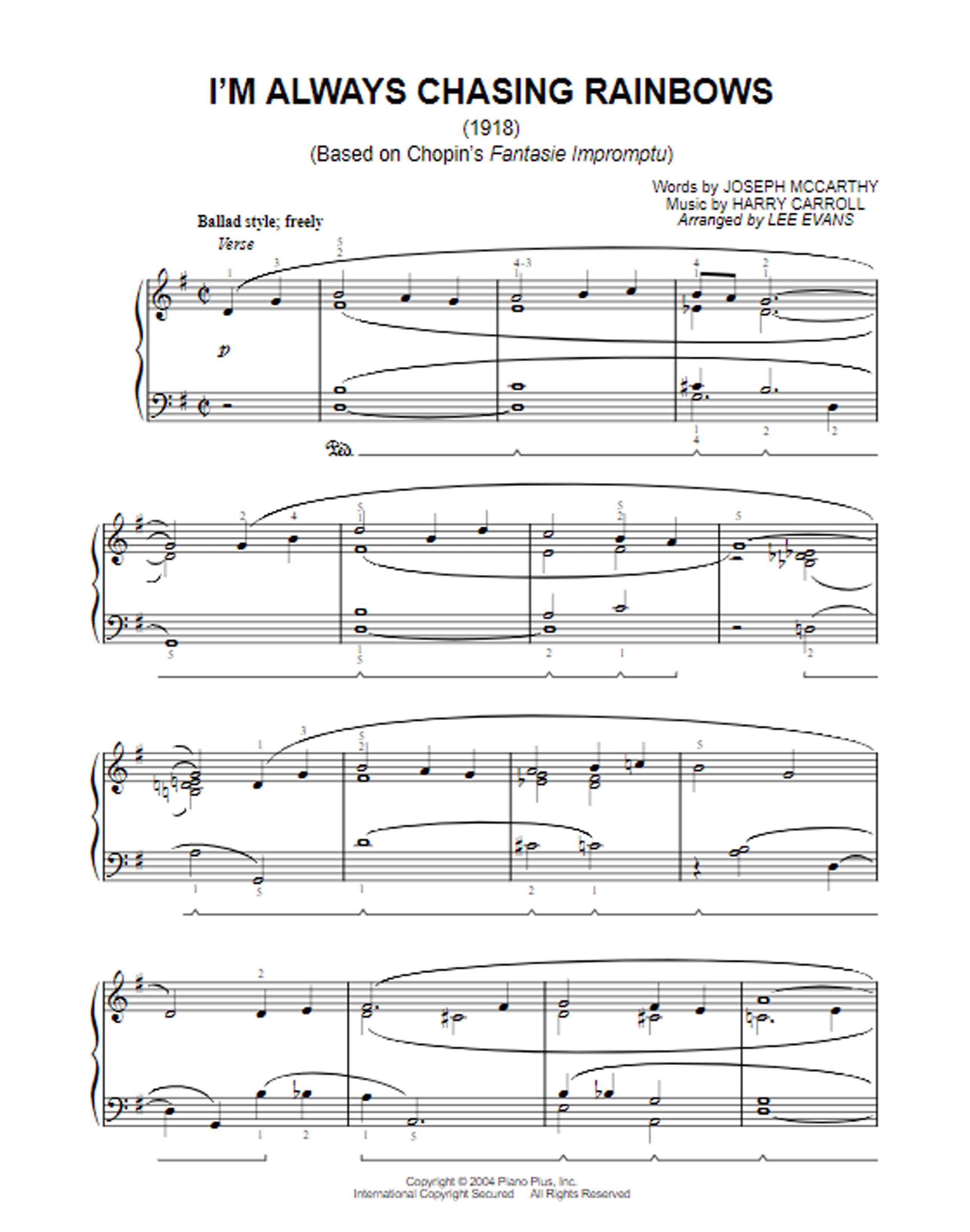
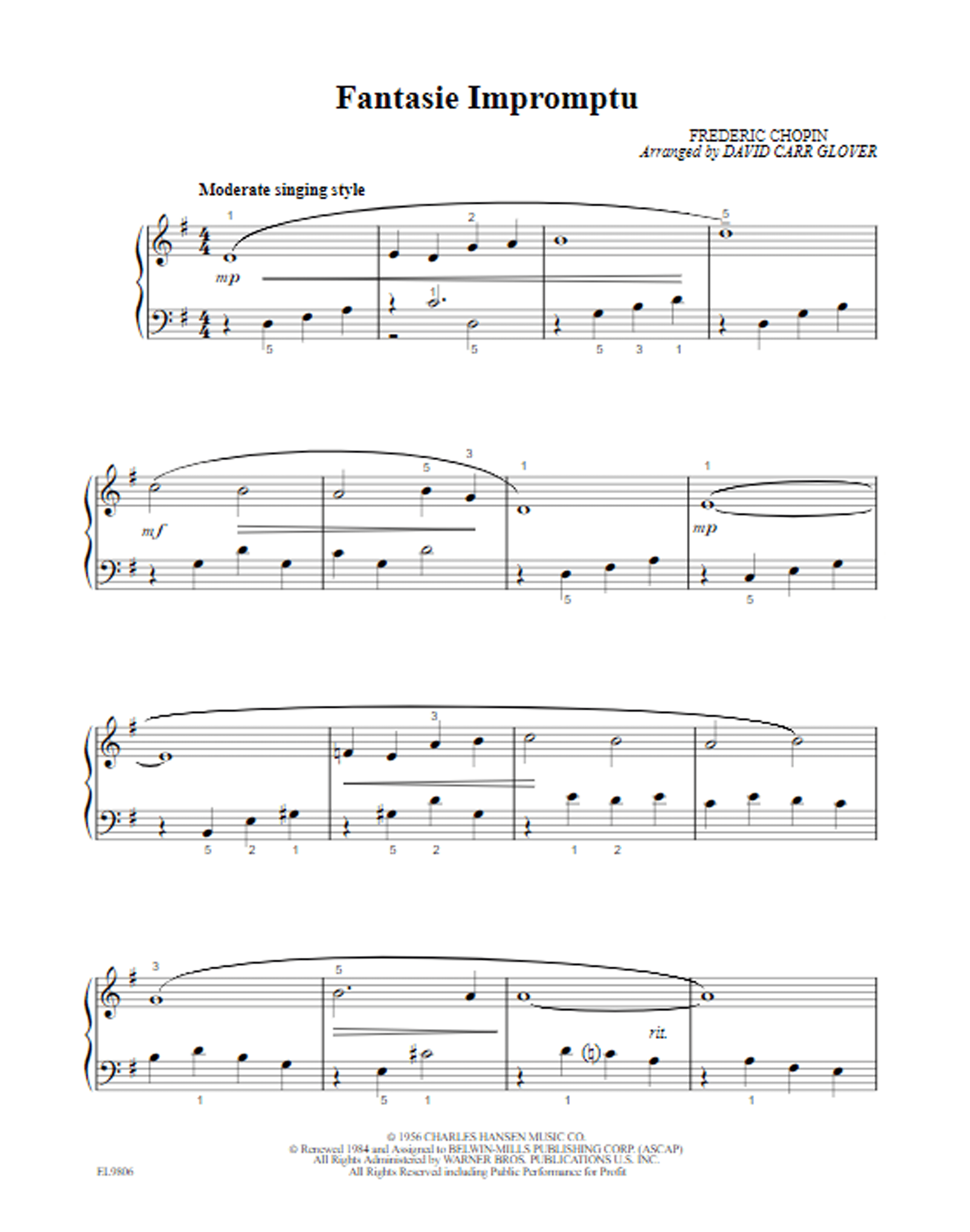
This is a very complicated piece that has consistent four against three rhythms that can be difficult to sync up. There are many beautiful melodic lines that are tucked in between busy sixteenth-note passages. Balancing the melody with everything else going on can be tricky.
EasierChopin’s “Fantasie Impromptu” has so many intricate, complex details that it is hard to simplify. However, the melodic middle section of this piece has a gorgeous, memorable melody. “I’m Always Chasing Rainbows” by Harry Carrol is based on that melody. This is an arrangement by Lee Evans that is manageable for early intermediate pianists.
EasiestDavid Carr Glover wrote this simplified version of the melodic middle section of “Fantasie Impromptu.” It is written in the key of G with very simple rhythms.
9. “Aria from The Goldberg Variations” by Bach
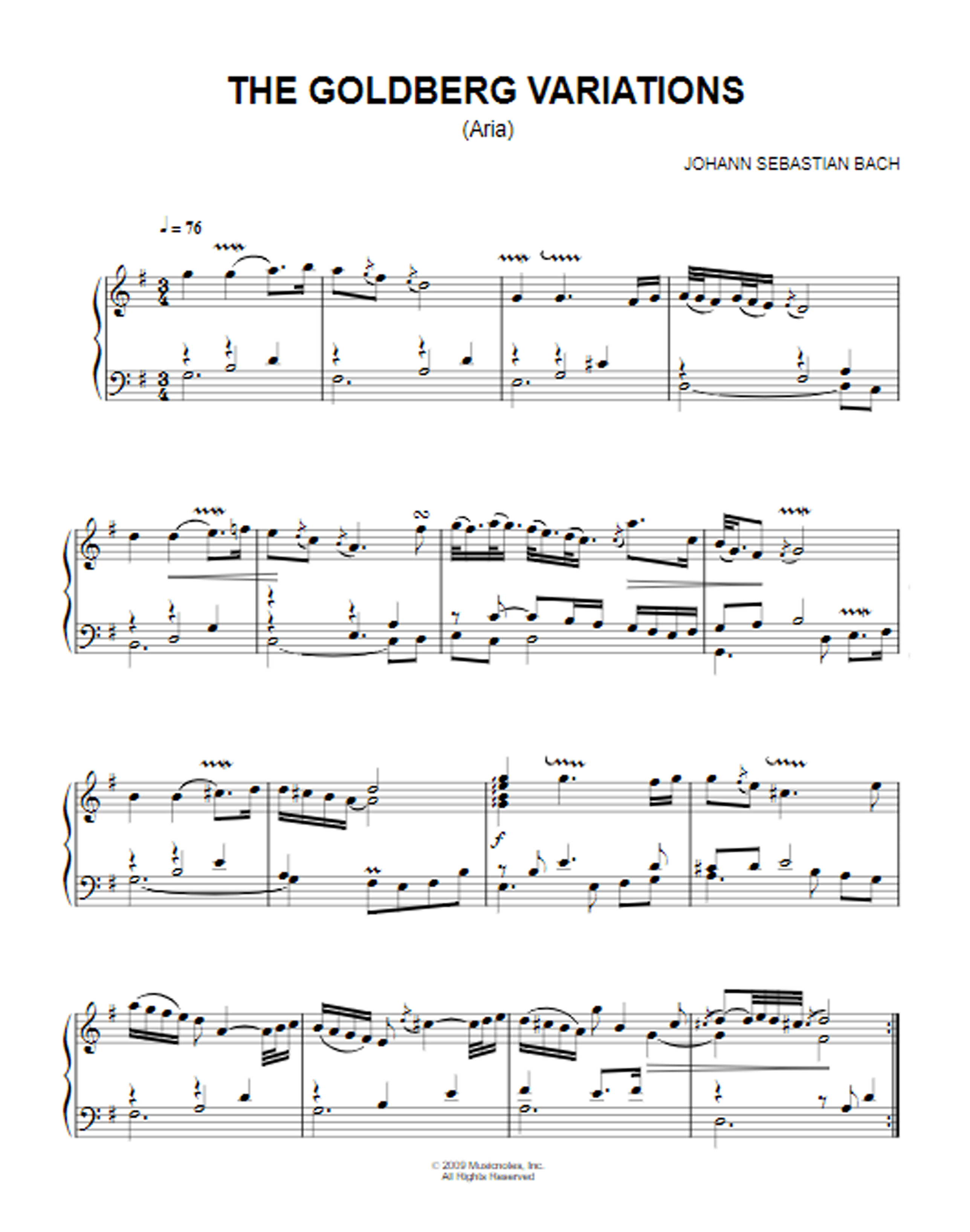
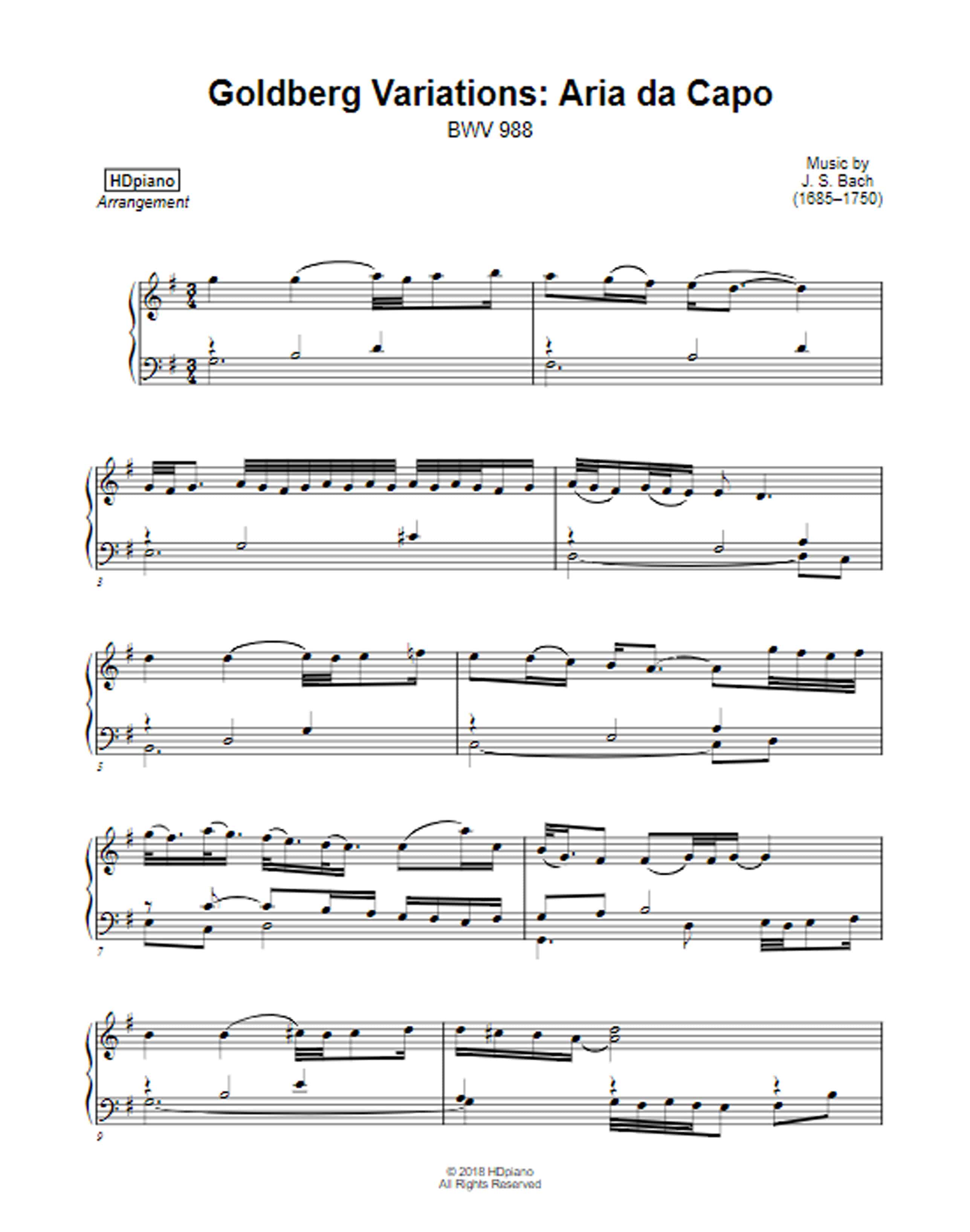
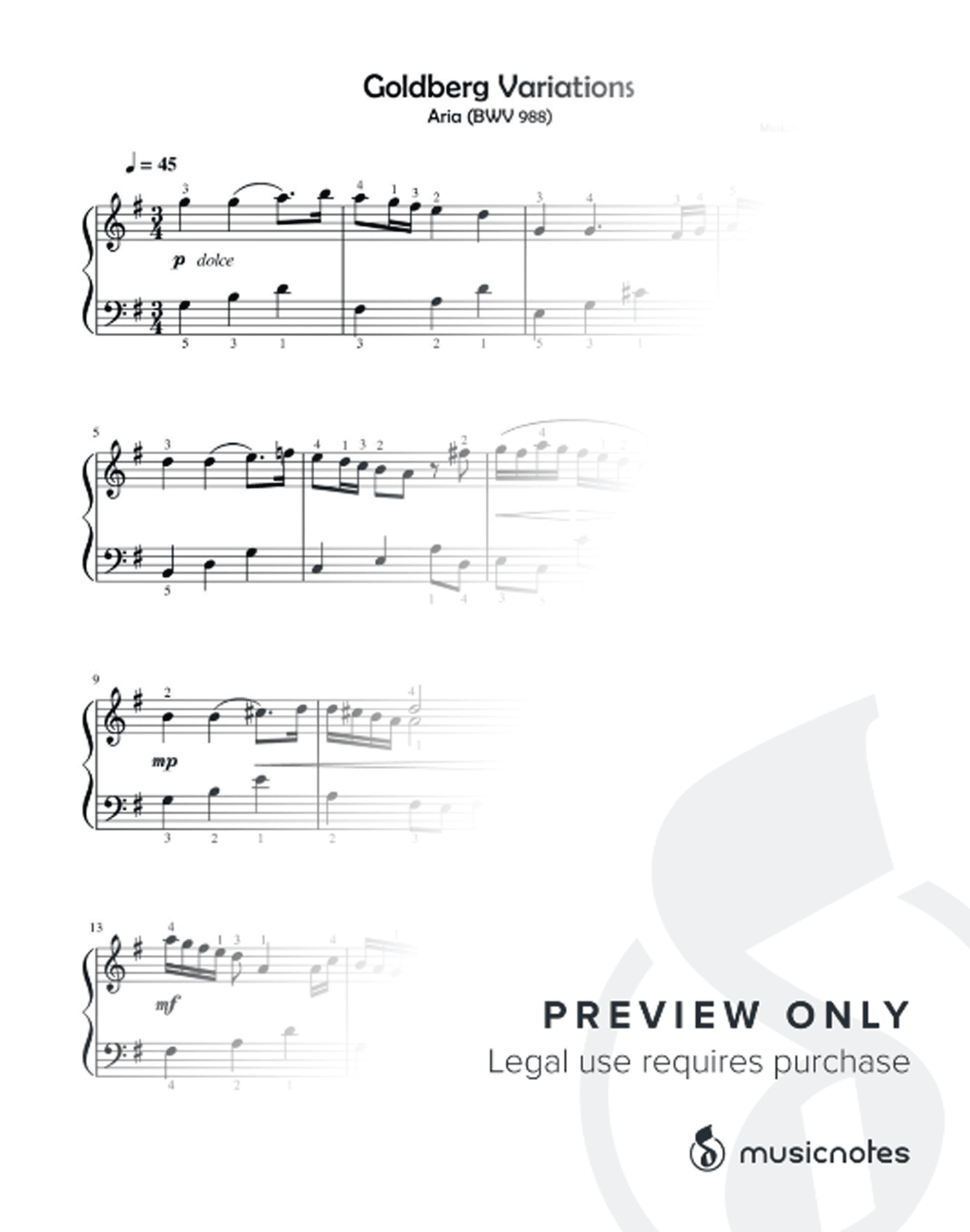
Baroque counterpoint always looks easier than it really is! This piece presents a lot of challenges with timing. The delicate tone requires excellent control over the keys. It can be difficult to interpret and coordinate all of the ornamentation throughout the piece.
EasierThis arrangement by HDpiano is very similar to the original. Except, all of the ornamented notes are notated. If you’re not familiar with the intricacies of Baroque ornamentation, this takes away some of the guesswork.
EasiestThis arrangement from Music Lessons by Darek is much easier to read than the original. Many rhythms are simplified. Ornamentation is either omitted or notated.
10. “Rhapsody in Blue” by Gershwin
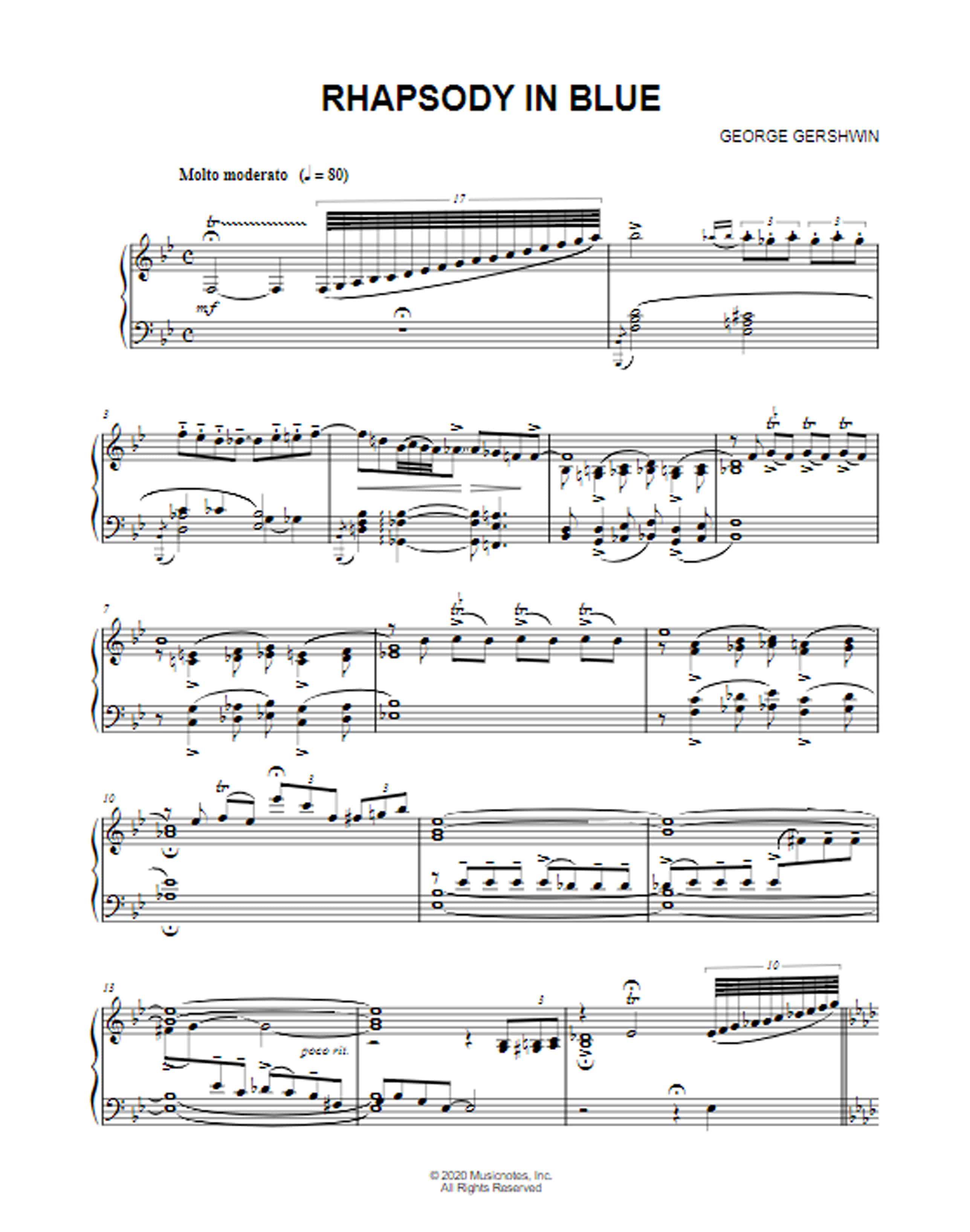
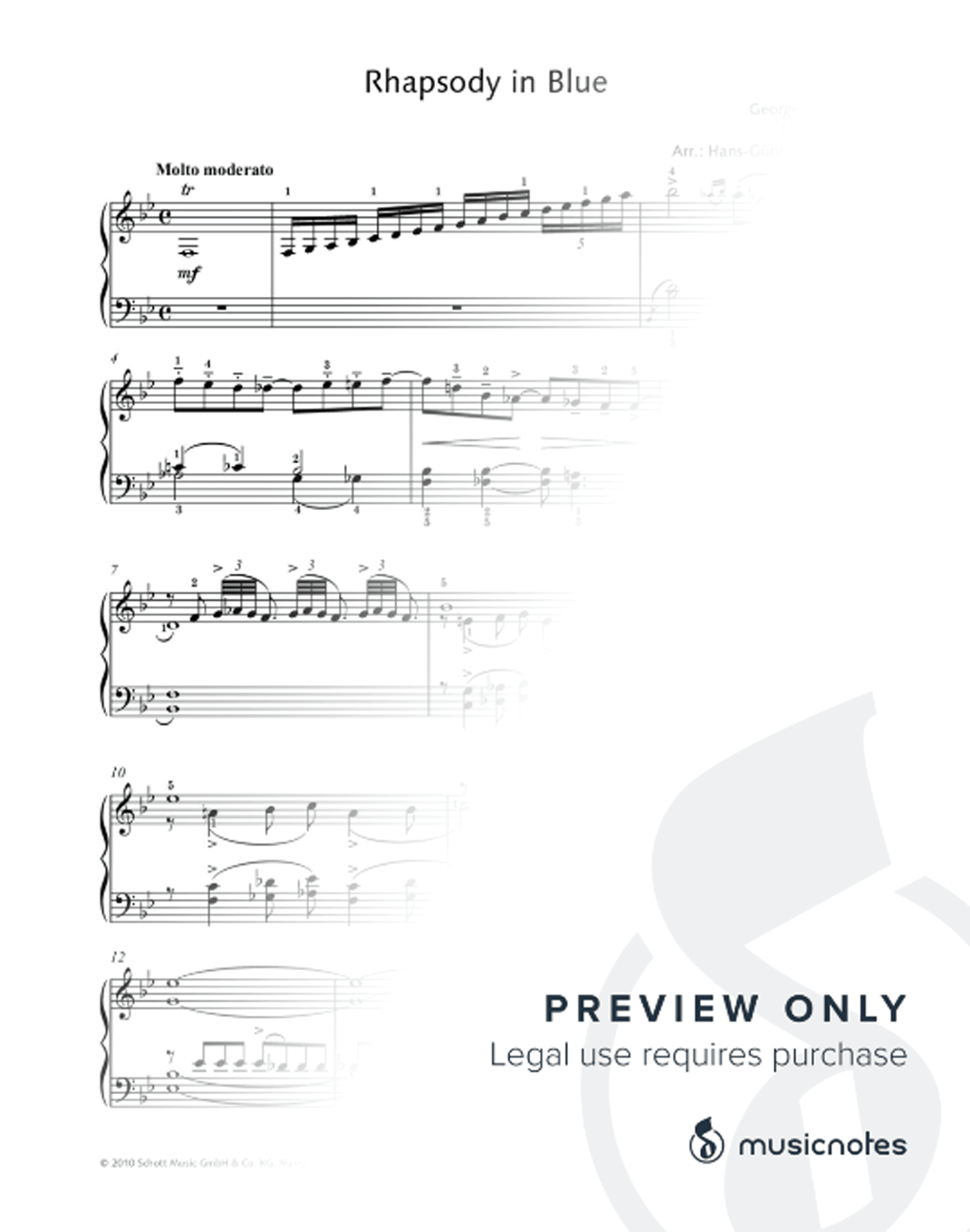
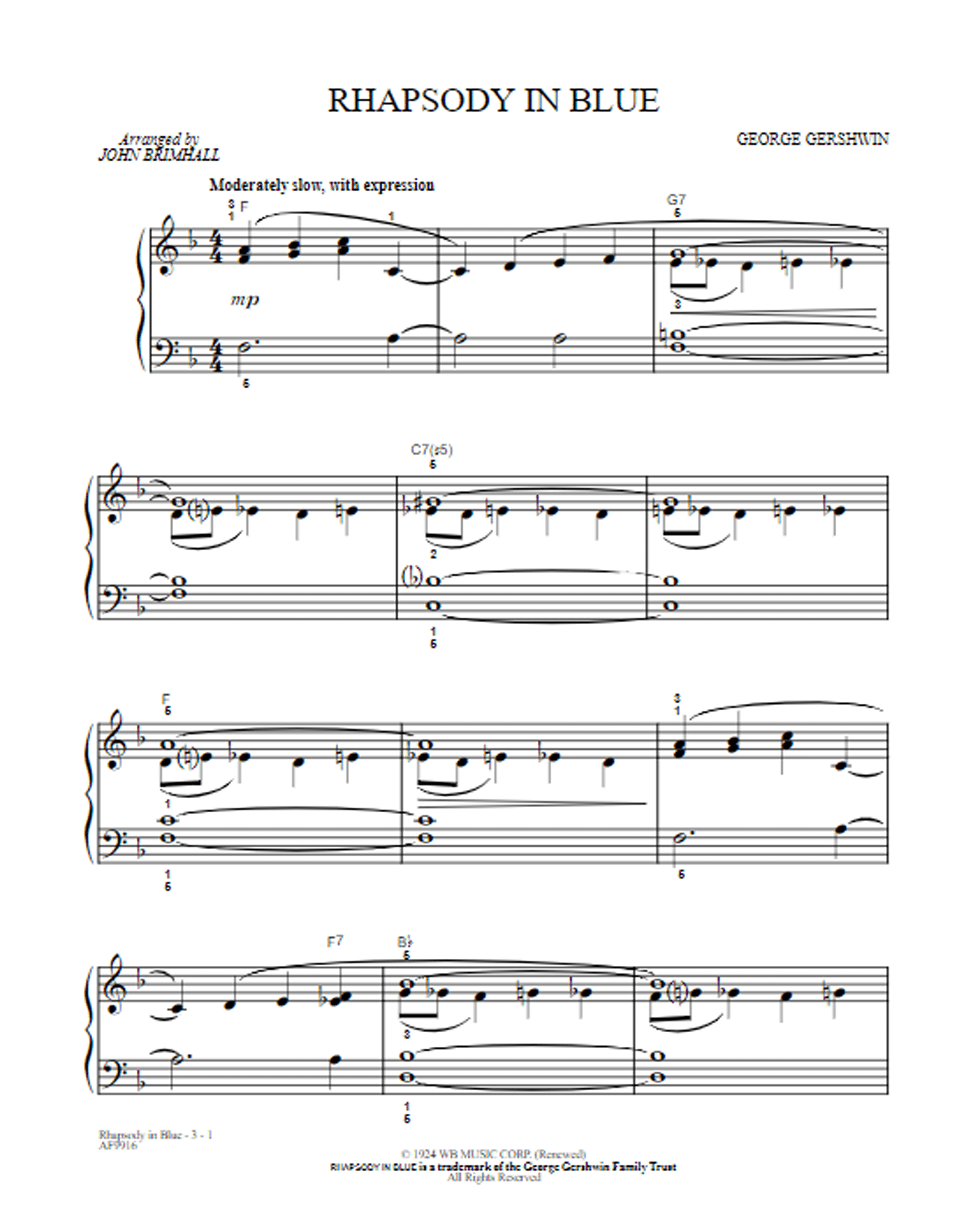
At 29 dense but dazzling pages of music, this is definitely a challenging piece of music to learn. It’s rhythmically and harmonically very complex, combining many classical piano techniques with jazz.
EasierThis excerpt of “Rhapsody in Blue” is only 5 pages long. It includes highlights from the original with simplified notation.
EasiestThis arrangement by John Brimhall features a familiar slower, more melodic section of “Rhapsody in Blue.” It uses a fairly small range of notes and is rhythmically not too challenging to read.
11. “La Companella” by Listz
Here’s another huge piece that captures listeners with its very detailed and technically complex nature. The title means “little bell” and it’s not easy to maintain the delicate chime sound of a bell through the busy voicings in this piece.
EasierThis arrangement by PHianonize is in the original key, but the texture is thinned out to include mostly the melodic material plus a simpler bass line.
EasiestThis arrangement by Flare is in an easier-to-read key, a minor. This arrangement is the easiest to read, but it would still be considered an intermediate piece.
This post was written by Megan, piano teacher and author of Pianissimo: A Very Piano Blog. Visit her website for more piano related blogs for teachers, parents, students, and all things piano.
More Blog Posts Related to the Piano
- How to Choose, Tune, & Play Your First Piano: Beginner Tips
- Piano Pairs: Beginner Notes and Easy Piano Arrangements
- 25 Easy Kids Songs For Piano
- 6 Ways Piano Teachers Can Give Assignments To Students
- 11 Piano Practice Tips
- Nature or Nurture: Do You Need To Be Born With Natural Talent To Play The Piano Well?
- The Versatility of Classical Music

